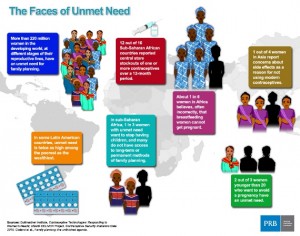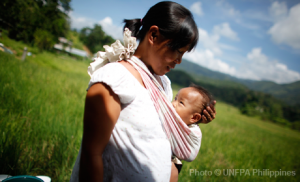Family Planning is a Smart Investment
Jun 18th, 2014 | By admin | Category: Family Planning, FeaturedBy Suzanne York.
In a time of government budget cuts and austerity programs, family planning is a low-cost investment that yields big dividends. And more importantly, it saves lives.
Globally, there are 222 million women in developing counties who lack access to contraception. Off these, 162 million women live in the world’s poorest countries. Barriers include long distances to health centers, costs, concern about health risks, shortages of contraceptives in stock, culture, and lack of information. And without family planning and reproductive health services, more women’s lives are at risk.
The United States government funds international family planning and reproductive health programs to a tune of about $610 million for the current fiscal year. According to Population Action International, $1 spent on family planning saves $4 in other areas, such as education, healthcare, water, and sanitation. Others, such as Women Deliver, state it can save up to $6.
Last week, the Guttmacher Institute released its latest findings on U.S. support for family planning programs around the world that breaks down the numbers and impact of U.S. international aid:
The Benefits of U.S. International Family Planning Assistance
A total of $610 million (of which $35 million is designated for the United Nations Population Fund) is appropriated for U.S. assistance for family planning and reproductive health programs for FY 2014. This level of funding makes it possible to achieve the following:
- 31 million women and couples receive contraceptive services and supplies;
- 7 million unintended pregnancies, including 3 million unplanned births, are averted;
- 3 million induced abortions are averted (2 million of them unsafe);
- 13,000 maternal deaths are averted;
- 60,000 fewer children lose their mothers.
For fiscal year 2015, the Obama Administration has requested $644 million for international family planning and reproductive health funding – approximately a 6 percent increase from 2014 (just this week, the Senate State, Foreign Operations, and Related Programs Appropriations Subcommittee approved this amount).
What if the U.S. decided to give less money, despite the pressing need? Eliminating U.S. assistance for international family planning and reproductive health programs would have disastrous effects on women all over the world.
Again, according to the Guttmacher Institute:
More Cuts Would Translate to More Setbacks
These gains would be seriously jeopardized if this already modest funding for the program were to be cut again. For example, each decrease of $10 million in U.S. international family planning and reproductive health assistance would result in the following:
- 520,000 fewer women and couples would receive contraceptive services and supplies;
- 110,000 more unintended pregnancies, including 50,000 more unplanned births, would occur;
- 50,000 more abortions would take place (of which 40,000 would be unsafe);
- 200 more maternal deaths would occur; and
- 900 more children would lose their mothers.
The researchers note that “Funding reductions of different magnitudes would have proportional effects. For example, a $20 million cut would result in double the impact described above.”
A Wise Investment
The best thing to do for people and the planet is to keep investing in women. Certainly any cuts to funding put women at risk. The U.S. should be funding international family planning at $1 billion. This would cost each American $3 per year. That’s a small price to pay to meet the needs of women who want to have healthy families and be healthy themselves.
Overall, less than 1 percent of the U.S. federal budget is spent on foreign assistance.
Suzanne York is a senior writer with the Institute for Population Studies.


